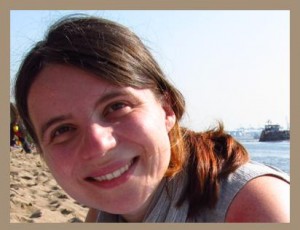 Ph. D. (2011) School of Marine and Atmospheric Sciences
Ph. D. (2011) School of Marine and Atmospheric Sciences
Stony Brook University, NY
M. Sci., 2004, Department of Food Science and Fisheries, Agriculture University of Szczecin (currently Westpomeranian Technical University of Szczecin)
bioaccumulation, bioavailability, radioactive cesium, elemental cycling, sediment biogeochemistry
Research Interests
I am interested in the role that marine organisms play in the cycle of chemicals that are of relevance for the health of both ecosystem and human. My research attempts to improve current approaches to assess environmental risk, which is often based on the levels of dissolved contaminants, ignoring potentially relevant chemical (e.g. chemical speciation) and biological processes (e.g. dietary assimilation of metals). Many elements (mercury, arsenic etc.) naturally present in the environment can become enriched due to anthropogenic activities such as agriculture or industry including power production. Those elements enter aquatic – both pelagic and benthic – food chains. Organisms can incorporate elements into their body via aqueous exposure and/or by ingestion of previously contaminated diet.
While previously, I have examined mechanisms that could influence biogeochemical transformations and bioavailability of arsenic, cadmium and chromium to deposit-feeding polychaetes, which is an essential step towards understanding the bioaccumulation, I am currently involved in postdoctoral research with Nicholas Fisher at SoMAS where I am studying bioaccumulation of radionuclides (i.e. 137Cs and 134Cs) released by the Dai-ichi nuclear facility near Fukushima as a result of the Tsunami that had followed the earthquake on March 11, 2011. Following the disaster in Japan, I have been studying the accumulation of radiocesium in macroalgae, bivalves from the shoreline as well as zooplantkon and fish inhabiting Japanese Pacific coastal waters. Most recently I have been applying Fukushima-cesium as a tracer of cross-Pacific migration of the Pacific bluefin tuna.
My past and present research have employed a variety of biogeochemical methods such as sequential extraction of sediment associate metals, gamma-emitting radioactive tracers used for metal uptake experiments such as pulse-chase feeding experiments etc. Instruments I have used for gamma-radioanalysis are sodium iodide (NaI) and high purity germanium (HPGe) detectors.
Publications
Baumann Z. and N.S. Fisher. 2011. Relating the sediment phase speciation of As, Cd and Cr with their bioavailability for the deposit-feeding polychaete Nereis succinea. Environmental Toxicology and Chemistry 30: 747-756.
Baumann Z. and N.S. Fisher. 2011. Modeling metal bioaccumulation in a deposit-feeding polychaete from labile sediment fractions and from pore water. Science of the Total Environment 409: 2607-2615.
Buesseler, K. O., S. R. Jayne, N. S. Fisher, I. I. Rypina, H. Baumann, Z. Baumann , C. F. Breier, E. M. Douglass, J. George, A. M. Macdonald, H. Miyamoto, J. Nishikawa, S. M. Pike, and S. Yoshida. 2012. Fukushima-derived radionuclides in the ocean and biota off Japan. Proceedings of the National Academy of Sciences of the United States of America. 109: 5984-5988.
Baumann Z., Koller. A. and N.S. Fisher. (2012) Factors influencing the assimilation of arsenic in a deposit-feeding polychaete. Comparative Biochemistry and Physiology Part C: Toxicology and Pharmacology 156: 42-50
Madigan, D.J., Baumann Z., and Fisher N.S. 2012. Pacific bluefin tuna (Thunnus orientalis) transport Fukushima-derived radionuclides from Japan to California. Proceedings of the National Academy of Sciences of the United States of America.
Madigan, D.J. , Baumann Z., Snodgrass, O.E., Ergül, H.E., Dewar, H., and Fisher, N.S. (submitted to ES&T) Radiocesium in Pacific bluefin tuna Thunnus orientalis in 2012 validates new tracer technique.
Fisher, N.S., Beaugelin-Seiller K., Hinton, T.G., Baumann, Z., Madigan, D.J., Garnier-Laplace, J. (submitted to PNAS) An evaluation of radiation doses and associated risk from the Fukushima nuclear accident to marine biota and human consumers of seafood.
Baumann, Z., Casacuberta, N., Baumann, H., Masque, P., and Fisher N.S. (in Biogeosciences Discussion) Natural and Fukushima-derived radioactivity in macroalgae and mussels along the Japanese shoreline.
Madigan, D.J. , Baumann Z., Carlisle A.B., Hoen, D.K, Popp, B.N., Munch S., Dewar, H., Snodgrass, O.E., Block, B.A., and Fisher, N.S., (in preparation) A new tracer toolbox reveals migration patterns of a pelagic predator, Pacific bluefin tuna Thunnus orientalis
N.S. Fisher and Baumann Z.. (in press) Application of radiotracer methodology for understanding geochemical fractionation and bioavailability of metals in estuarine sediments In proceeding IAEA International Symposium on Isotopes in Hydrology, Marine Ecosystems, and Climate Change Studies.
Baumann Z., Cutter G.A. and N.S. Fisher. Determining the phase speciation of sedimentary metals with radioisotopes to support metal bioavailability studies. (in preparation)

